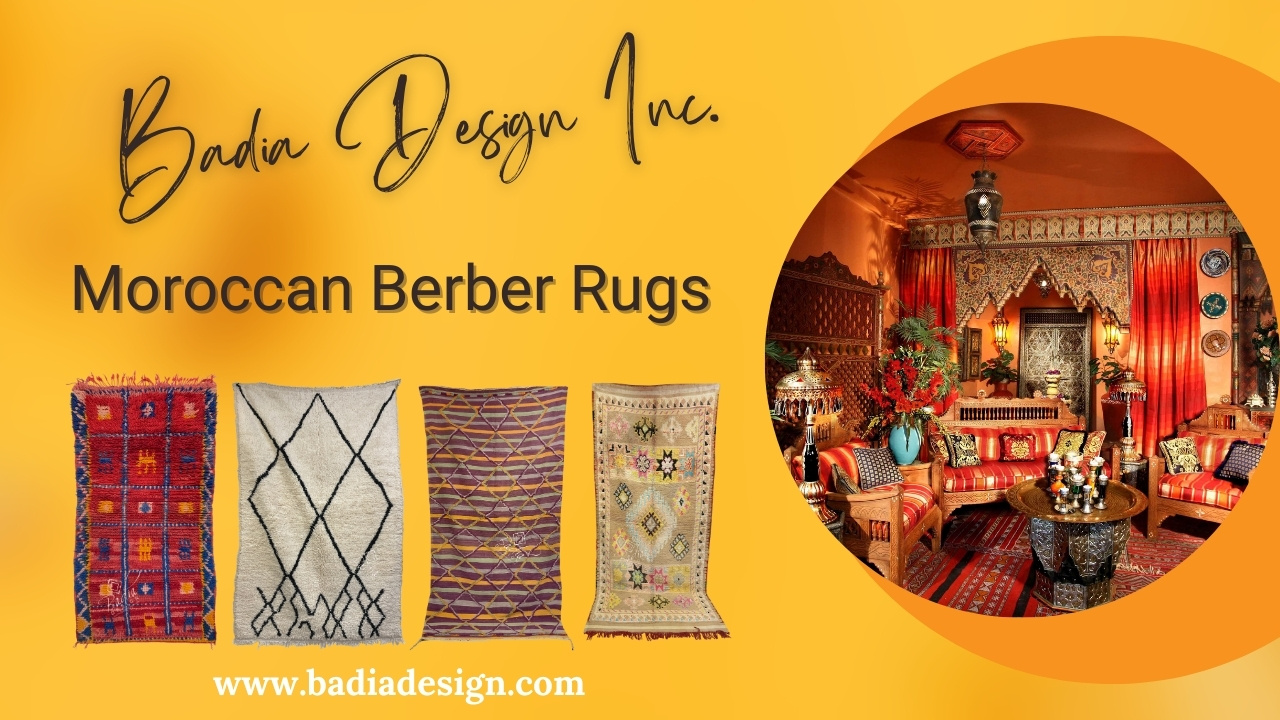Handmade Moroccan Berber Rugs
Handmade Moroccan Berber Rugs
Blog Article
Moroccan Berber Rugs: A Fusion of History, Artistry, and Timeless Elegance
These rugs have enchanted people across the globe with their historical significance, intricate craftsmanship, and versatile aesthetics. Whether you are furnishing a comfortable living room, a modern office space, or a upscale resort, these rugs go beyond practicality to become cultural and artistic masterpieces. In this article, we’ll explore the rich origins of Moroccan Berber rugs, the meticulous craftsmanship behind their creation, their exceptional longevity, and practical tips for styling them in modern spaces.
The origins of Moroccan Berber rugs can be traced back thousands of years to the Berber tribes of North Africa. The Berbers, with their deeply rooted traditions, crafted unique weaving methods to meet the demands of their migratory way of life and diverse climates.
The symbols and motifs in these rugs convey meanings that are specific to the tribe or family of origin. Motifs often symbolize concepts such as protection, nature, or fertility, giving each rug cultural significance. Historically, these rugs were made for practical use, offering warmth in the cold Atlas Mountains or serving as bedding in arid environments.
In the mid-20th century, Moroccan Berber rugs gained global popularity when renowned visionaries like Le Corbusier and Frank Lloyd Wright featured them in their iconic designs. Today, their enduring charm and cultural richness make them a top pick for decorators and art enthusiasts worldwide.
The production of Moroccan Berber rugs is an elaborate art form handed down through generations. This craftsmanship embodies a deep connection to heritage and artistry.
These rugs are made from materials like wool, camel hair, and cotton, valued for their durability and softness. Wool stands out for being soft, strong, as well as for its natural warmth. Artisans often hand-spin the wool, giving each rug a distinctive texture.
Berber rugs are handwoven on classic frames, a process that can take extensive time depending on the intricacy and dimensions of the design. The knotting style, from Beni Ourain’s casual elegance to here Azilal’s tighter weaves, impacts both durability and design.
Artisans rely on natural dyes from the environment to produce the vivid tones seen in Berber rugs. Earthy tones such as beige, cream, and brown are common in Beni Ourain rugs, while Azilal and Boucherouite rugs showcase bolder colors like reds, blues, and yellows.
One of the key features of Moroccan Berber rugs is their exceptional durability. As a result, they’re an excellent fit for living spaces and work environments.
Berber rugs owe their longevity to the excellent quality of their natural fibers. Wool’s natural flexibility and resistance to stains make it a ideal choice for lasting rugs.
Cleaning and maintaining a Moroccan Berber rug is relatively simple. Regular vacuuming, spot cleaning with mild detergent, and occasional professional cleaning will keep them looking pristine for years.
Styling Moroccan Berber Rugs in Contemporary Interiors
Adding Moroccan Berber rugs to modern spaces is simpler than it seems. Their versatile designs and textures can complement a wide range of styles, from minimalist to bohemian.
1. Create a Focal Point in the Living Room
Use a large Beni Ourain rug as the centerpiece of your living room. The rug’s muted tones and clean lines bring cohesion to the space and exude coziness.
2. Introduce Vibrancy to Minimalist Rooms
If your space leans toward a monochromatic or minimalist aesthetic, a vibrant Azilal or Boucherouite rug can introduce a pop of color and visual interest. They are ideal for subdued settings, acting as the central highlight.
3. Combine Rugs for Depth and Style
For a cozy, eclectic vibe, layer a smaller Berber rug over a larger natural-fiber rug, such as jute or sisal. This combination not only adds depth and texture but also highlights the intricate details of the Berber design.
4. Elevate the Look of Offices and Workspaces
Moroccan Berber rugs are perfect for adding elegance and warmth to professional spaces, including offices and lounges. The artisanal craftsmanship of these rugs radiates authenticity and refinement.
5. Display Moroccan Berber Rugs as Decorative Art
Some Moroccan Berber rugs are so visually stunning that they deserve to be displayed as art. Hanging a rug on the wall can add a unique touch to your home or business, showcasing the craftsmanship and cultural heritage of the piece.
Reasons to Invest in Moroccan Berber Rugs
For both homeowners and businesses, Moroccan Berber rugs represent a blend of practicality, aesthetics, and cultural significance. These rugs are built to last, and their classic designs remain relevant despite evolving decor trends.
Sustainability in Moroccan Berber Rugs
Many Berber rugs are crafted using eco-friendly and sustainable practices. Purchasing these rugs helps preserve artisan traditions while enriching your decor with sustainable beauty.
Increasing Value Over Time
Vintage or unique Moroccan Berber rugs tend to grow in worth over the years. These rugs serve as both decorative items and investment-worthy collectibles.
 Report this page
Report this page